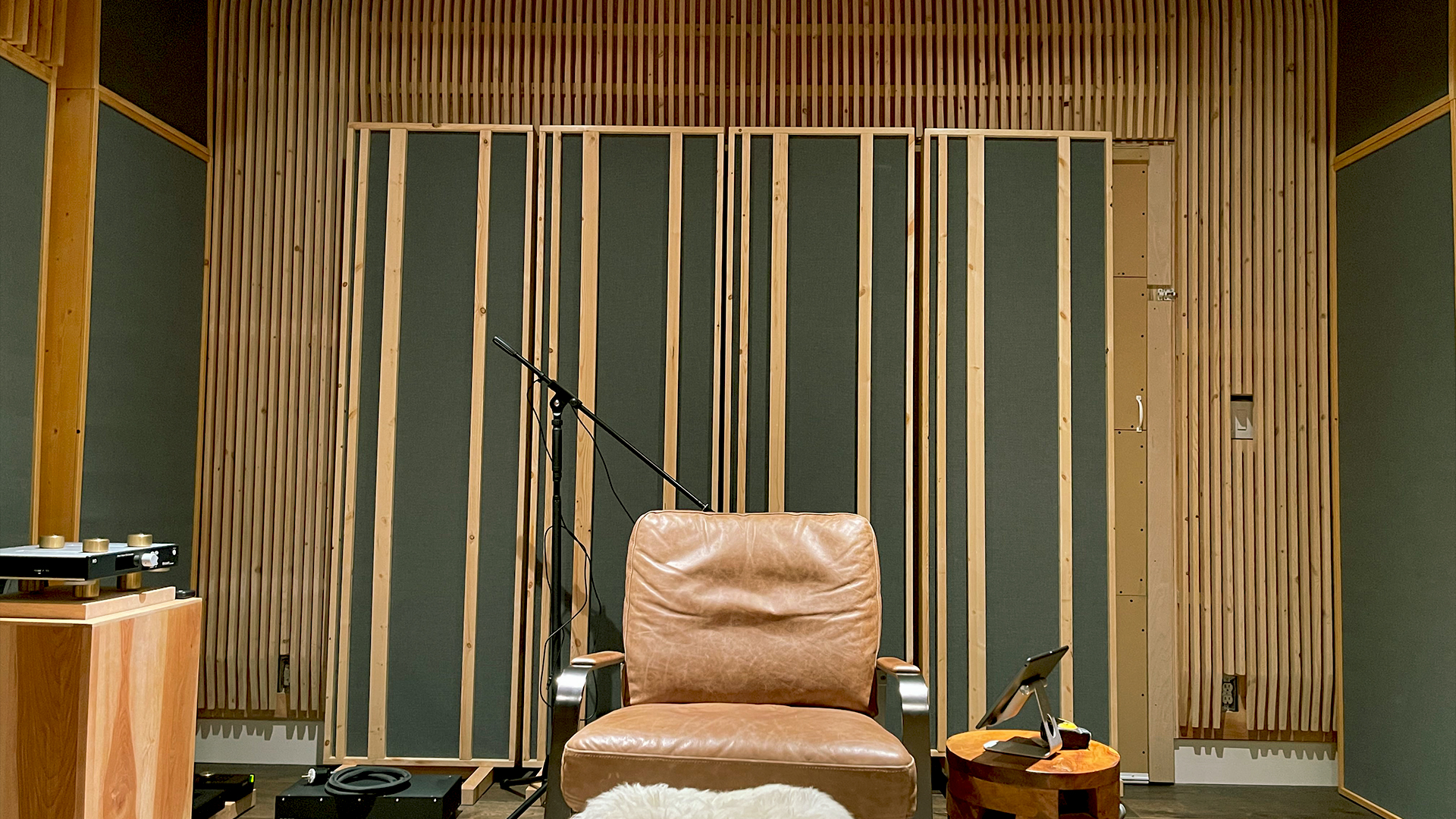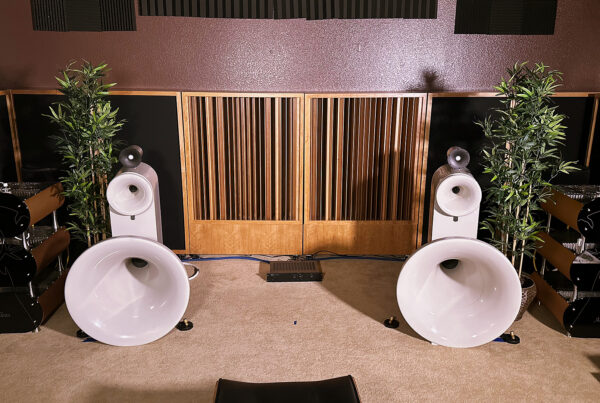Acoustic Design Project
DIY Done Right II
At Acoustic Fields, we offer two ways to achieve your acoustic goals. We have both absorption and diffusion production units which you order from us, we build them, and ship them to you for installation. We also have a DIY program for our technology. With this process, you purchase our proprietary carbon and foam technology and build your units from our drawings. You then install them per our design process. Watch the following DIY step one and step two processes that one of our clients pursued for his two channel listening room.

The three main absorption types
There are two main acoustical issues within small rooms. We have unwanted, low frequency pressure and middle and high frequency reflection issues to resolve. Unwanted low frequency pressure issues manifest themselves as room modes. Room modes are air pockets that can smother or exaggerate certain octave bands. You will hear too much or not enough. Neither is desirable. The goal is to have equal representation of all frequencies at all pressure levels used within the room’s usage. Reflections blur our speech from vocals. Reflections also produce middle and high frequency distortion by attaching reverb “noise” to each fundamental frequency. Low frequency absorption is the only way to manage unwanted low frequency issues within our small rooms. There are three main types of low-frequency absorption.
There is Helmholtz, membrane, and diaphragmatic. Of the three types, diaphragmatic is the most powerful form. A well designed diaphragmatic absorber can go lower in response and achieve higher rates of absorption per square foot of surface area. You must cover a certain percentage of each wall surface area in order to manage the pressure levels throughout the room. The best way to achieve the required surface area coverage along with the rate and level required is to build the absorption technology into the wall itself using our CAW system. Reflections from our room boundary surfaces produce reverberation. Reverberation is not echo. It is the reflections from the floor, ceiling, and four walls. Reverberation is defined as how long a sound stays around within the room after it has been sung, spoken, or played.


Smoothest rate and level of absorption
When a sound overstays its welcome, it has a negative impact on speech intelligibility and high reverb times also produce middle and high frequency distortions in our music. We want the straight line or direct energy from our speakers. The direct energy from our speakers is pure sound with no room sound. We need to balance the straight line speaker energy with the reflections from the room walls, floor, and ceiling. Watch both Part 1 and Part 2 of a DIY process using our carbon and foam technologies. Our carbon was built into the walls using our inwall CAW system. Stud space depth was used to calculate the frequency issue at that specific room location. The carbon filter depth was built to provide the proper rate of absorption. Anyone can design an absorber that goes down to 40 hz. The performance issue is how much do you absorb per square foot at 40Hz.It’s all about how low and how much.
Our CAW system achieves large rates of absorption. We get 63% at 40 hz. and 100% at 50 Hz. Middle and high frequency reflections were managed using diffusion and absorption. Absorption was achieved using our proprietary foam technology. Diffusion was achieved using a combination of one and two dimensional diffusion technologies. Our proprietary foam technology took 8 years to develop. It has the smoothest absorption curves from 25 – 500 hz. of any foam ever created. Period. It was specifically designed for music and voice. It will not keep your room warm or cool or stop your neighbors stereo noise. It will provide the smoothest rate and level of absorption that is required for music and voice applications. Our carbon and foam technologies were designed to have the same rate of absorption at different frequencies.



Module Products

ACDA-10 M
The ACDA -10 modules are our highest performing product. They follow the absorption coefficients of the ACDA-10 with a stronger emphasis on the 60 – 80 Hz. range. The full range absorption for each module is 30 Hz. – 6,500 Hz.
This increased performance comes in a module that is 24″ x 24″ x 12″ and weighs 70 lbs. Modules are stackable and the number and surface area coverage can be fined tuned in your room size/volume/usage.

Foam Frame Panel
The most economical way to install our foam technology on your walls or ceiling is to use our foam and the mounts. This allows for airflow on both sides as the mount pushes the foam 2″ away from the surface to allow for air floor. Foam and mounts are designed to work together. Wood frame can be painted any color. Foam is grey only.

ACDA-12 M
Each ACDA-12 module unit is a sealed cabinet. They are 48″ w x 30″ h x 12″ d and are the bottom row that supports the ACDA-10 units. They can be painted or custom veneered per your request. Each unit weighs 150 lbs. and provides a solid and sturdy base for the stacking of the ACDA-10 modules or the QD-13 modules. Up to 3 rows of ACDA – 10 units can be stacked upon the ACDA-12 modules. They are positioned along the floor of all 4 walls in any critical listening environment.

DIY Acoustic Treatment
Meet the most advanced DIY acoustic treatment plans online! They include 5 sound diffuser build plans, 1 bass absorber build plan, and 1 acoustic panel plan. Developed by an industry leading expert, these plans offer the most affordable solutions for talented engineers and producers who don‘t want to spend thousands of dollars in order to achieve the sound of the big music companies.
Do you want to solve your room acoustic problems?
There’s no one size fits all when it comes to room acoustics.
Get your FREE personal room acoustics analysis by chief acoustics engineer Dennis Foley.









